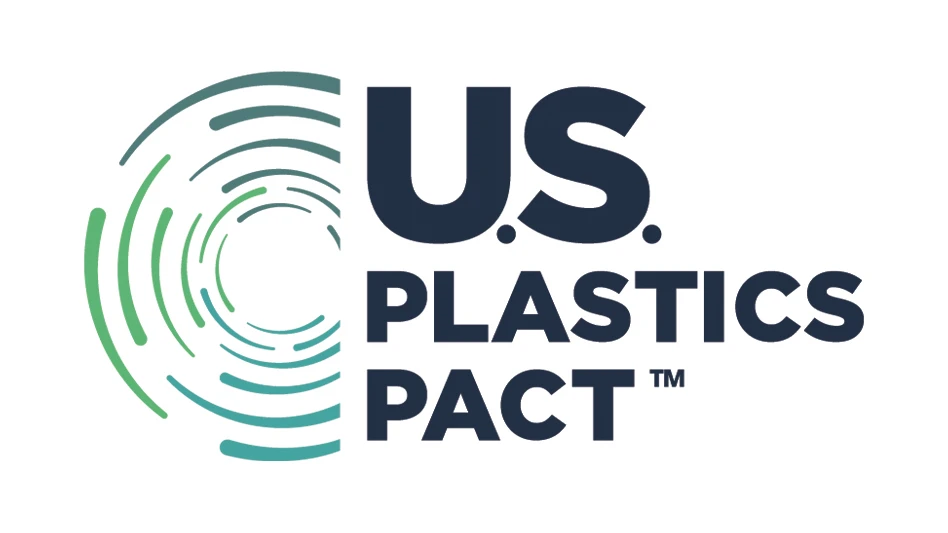Since its inception in Germany in 1990, the Duales System Deutschland AG—comprised of nearly 600 companies representing the retail, consumer goods and packaging industries, as well as materials suppliers—and its Green Dot program have led to a 14 percent decrease in per capita consumption of packaging.
The system has proven its worth as far as many other European governments are concerned and it is now licensed to 20 other European Union (EU) nations that are striving to comply with the European Packaging Directive.
A DUAL SYSTEM. In response to Germany’s Packaging Ordinance under the Waste Act, the non-profit organization Duales System Deutschland AG (DSD) was founded in 1990 to share the take-back burden throughout the industry. The Packaging Ordinance, based on the producer responsibility principle, made producers and distributors of packaging responsible for managing the life cycle of their products and stipulated the separate collection and sorting of packaging waste.
The two systems in question are a curbside collection or a drop-off system (called "bring system" by DSD), in which consumers take their used packaging to containers or recycling stations. The curbside system employs yellow bags or bins for the collection of lightweight packaging material. The bring system is generally used to collect color-sorted glass, paper and cardboard, while the curbside is generally used to collect paper, according to the DSD Web site (www.gruener-punkt.de).
DSD contracts with a nationwide network of more than 400 municipal and private waste management firms to carry out the collection and recycling of the discarded packaging.
Licensing of the Green Dot trademark is used to finance the system. Any surplus income resulting from the licensing is returned to the program participants through cost reductions or investments in the further development of the system. The Green Dot symbol may be printed on packaging if the manufacturer has paid a license fee to the DSD. According to the DSD Web site, the fee is determined based on the polluter-pays principle and "depends on the material, weight and volume or area of the packaging. As such, it is an incentive to optimize packaging: The less the pack weighs, the lower the license fee will be."
FIGURATIVELY SPEAKING. According to the DSD Web site, Germany’s Dual System has created nearly 17,000 jobs in the country and led to more than EUR 20 billion in investments by German industry. These economic benefits are secondary to the environmental benefits the system provides, according to DSD.
"Since the first environmental performance balance for 1993, the Dual System has met the legally required recycling targets for all packaging materials and, in some cases, has even significantly exceeded them," according to environmental performance balance information provided on the DSD Web site. For paper, cardboard and tinplate material, recycling rates often exceed 100 percent, as consumers also deposit packaging without the Green Dot in the DSD’s collection containers.
While these materials enjoy recycling rates that exceed the mandated level, glass packaging has seen an ongoing decline since 2000. The DSD blames the decline on the trend away from glass packaging toward PET packaging.
For 2003, German citizens collected a total of 5.99 million metric tons in Green Dot containers, according to the DSD. Of this, 4.94 million metric tons of packaging material was forwarded for recycling. This is a decline from 2002 figures of 6.32 million metric tons collected.
|
Beyond Borders |
|
Since the implementation of Germany’s Dual System, the European Union has implemented the European Packaging Directive. Intended to standardize national measures that had been started by the individual member states of the European Union for the management of packaging and packaging, this Directive originally took effect Dec. 31, 1994. The Directive originally set recovery targets of 50 percent to 65 percent for packaging waste, stipulating a recycling rate of 25 percent to 45 percent for this material, which includes product packaging as well as service packaging, or paper bags, plastic wrap and disposable dishes. This original goal has since been revised twice. The most current revision, which went into affect in August, set the recovery rate between 50 percent to 60 percent by weight and the recycling rate between 25 percent to 55 percent. The deadline for these goals is the end of 2008. With this implementation of this Directive, in 1995 DSD, Eco-Emballages S.A., asbl FOST Plus vzw and Altstoff Recycling Austria AG founded the Packaging Recovery Organization Europe s.p.r.l (PRO-EUROPE), based in Brussels, as an umbrella organization for European packaging and packaging waste recovery and recycling programs that use the "Green Dot" trademark as a financing symbol. PRO-EUROPE currently has 22 member organizations, including Germany’s DSD, as well as two cooperation partners, the United Kingdom’s VALPAK and Canada’s CSR. DSD reports that the Green Dot trademark is printed on more than 460 billion pieces of packaging in Europe and is protected in nearly 160 countries. |
The DSD uses the volume of packaging carrying the Green Dot license as the basis for calculating its recycling rates.
For 2003, paper and cardboard enjoyed the highest recycling rate at 161 percent (1.4 million metric tons); with aluminum at 128 percent (35,800 metric tons); tinplate at 121 percent (328,400 metric tons); glass at 99 percent (2.3 million metric tons); plastics at 97 percent (603,650 metric tons); and composites at 74 percent (296,300 metric tons).
However, an extension of mandatory deposits on some beverage packaging implemented Jan. 1, 2003, has negatively affected the Dual System in an "appreciably, but not dramatic" way, Hans-Peter Repnik, CEO of DSD, said at a June hearing that accompanied the release of 2003 final statistics.
These mandatory deposits led to a sales loss of EUR 300 million, the DSD reports, and the volume of glass collected dropped by about 160,000 metric tons.
In 2003, DSD spent EUR 1.66 billion for the collection and recycling of packaging material, which DSD reports is EUR 162 million less than in 2002. Therefore, DSD’s customers paid nearly 23 percent less for licensing of the Green Dot in 2003 than in 1998. The organization credits the decrease in cost to the increasing efficiency of recycling.
During the June press conference, DSD Financial Director Diether Buchmann said the average cost for the Green Dot trademark would drop by 5 percent when a new price list is introduced Jan. 1, 2005.
"Duales System Deutschland AG is a modern company that operates efficiently and successfully," Repnik said during the press conference. "We want to keep the system costs as low as possible in future without endangering our ecological performance and the good service we offer consumers."
EYE TOWARD INNOVATION. DSD has recently launched the 2007 Innovation Program, which seeks ways to improve collection quality in problematic regions. Repnik said the program will "involve a review of whether there are, in certain areas, expedient, cost-reducing but environmentally at least equivalent alternatives to current collection structures." He was careful to add that this would not mark a departure from the separate collection of lightweight packaging, though he did say that political stipulations will determine the extent of consumer packaging that is collected separately and whether the current collection methods are retained.
The author is associate editor of Recycling Today and can be contacted at dtoto@gie.net.

Explore the October 2004 Issue
Check out more from this issue and find your next story to read.
Latest from Recycling Today
- IWS' newest MRF is part of its broader strategy to modernize waste management infrastructure
- PCA reports profitable Q1
- British Steel mill subject of UK government intervention
- NRC seeks speakers for October event
- LME identifies Hong Kong warehouses
- Greenville, Mississippi, launches aluminum can recycling program
- Cotton Lives On kicks off 2025 recycling activities
- Georgia-Pacific names president of corrugated business





